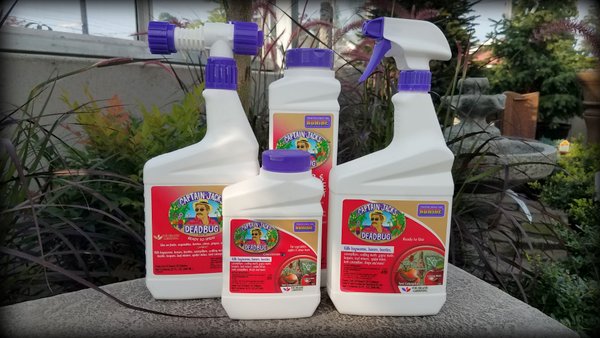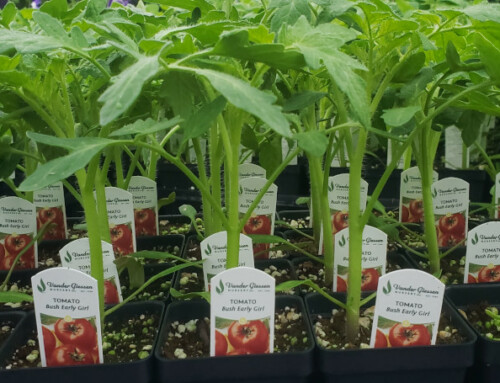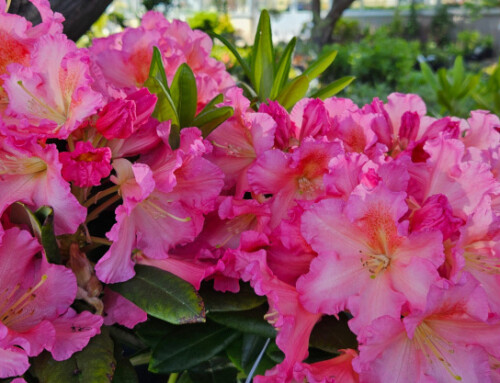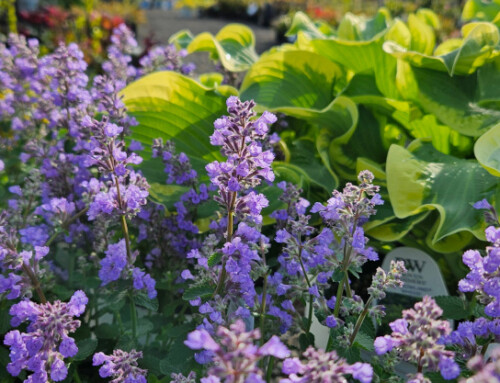To people who don’t live in the Pacific Northwest, it almost sounds unreal to say our summers are dry. So stereotyped is our corner of the world as an always-drizzling moss-covered region that many don’t realize how dry it can be from July through September. One look, however, at the heat-stressed pots on your patio reveals the truth: summer is dry! To keep your hanging baskets and pots going through heat and into fall—and to ensure a healthy lawn through autumn and winter–here are a few tasks to accomplish in late summer.
For starters, let’s focus on your planters and hanging baskets. If you’ve kept them going this long into the season, don’t give up now! Temperatures are already beginning to drop, decreasing the stress on your plants. In the meantime, your first step is to keep up with watering. If you used a well-drained potting mix when you planted your containers this spring (which I recommend since summer annuals need good drainage), it’s hard to overwater in the kind of warm weather we’ve had. For my hanging baskets in full sun, I water twice a day until the baskets start to drip when daytime temperatures top 80 degrees.
Frequent watering can, however, wash nutrients out of the soil, so the second important task to keep your plants looking their best is weekly fertilizing. A water-soluble fertilizer like Jack’s Classic is the quickest, most effective way to feed your plants, allowing them to continue to grow and bloom into autumn. This late in the season, feed weekly with Jack’s Blossom Booster or Petunia Feed blends for the biggest, most colorful blooms.
Third, don’t be afraid to trim plants that have gotten rangy or overly aggressive. If you’ve ever designed and planted your own pots, you know how one or two varieties—trailing petunias, in particular—can quickly begin to take over the others. In that case, get out the pruners! Lightly prune back leggy branches on your hanging baskets or containers and in a couple weeks’ time, they’ll have filled out with new growth and begin blooming once again.
Last, don’t let bugs get the best of your flowers. Late summer is when aphids, thrips, and other bugs can quickly wreak havoc on your flowers, and with your plants full and dense, you may not even notice the unwanted visitors until the population is hard to control. For easy prevention of aphids and many other bugs, use Bonide Systemic Granules, an easy-to-use granular insecticide that can be sprinkled onto the soil of your pots and baskets and will kill aphids and prevent their return for six to eight weeks. For thrips, I typically spray with Captain Jack’s Deadbug Brew or neem oil, both of which also control several other pests as well.
In addition to caring for your flowers in late summer, it’s also a key time for one aspect of lawn care: cranefly and grub control. Craneflies typically hatch out in late summer and burrow underground where they can eat a lawn’s roots through winter, leaving patches of dead grass come spring. Additionally, cranefly larvae and other grubs make great food for moles, so by controlling the grub population, you’ll be less likely to have moles take up residence in your yard. To control craneflies and other grubs, I recommend granular Bonide Eight brand insecticide. Sometime in August or September, spread the insecticide and water it in to enjoy a lawn free from damaging craneflies and pesky moles through autumn and winter.
In just a few weeks we’ll be looking at summer in the rearview mirror, so enjoy this season while it lasts!








Leave A Comment